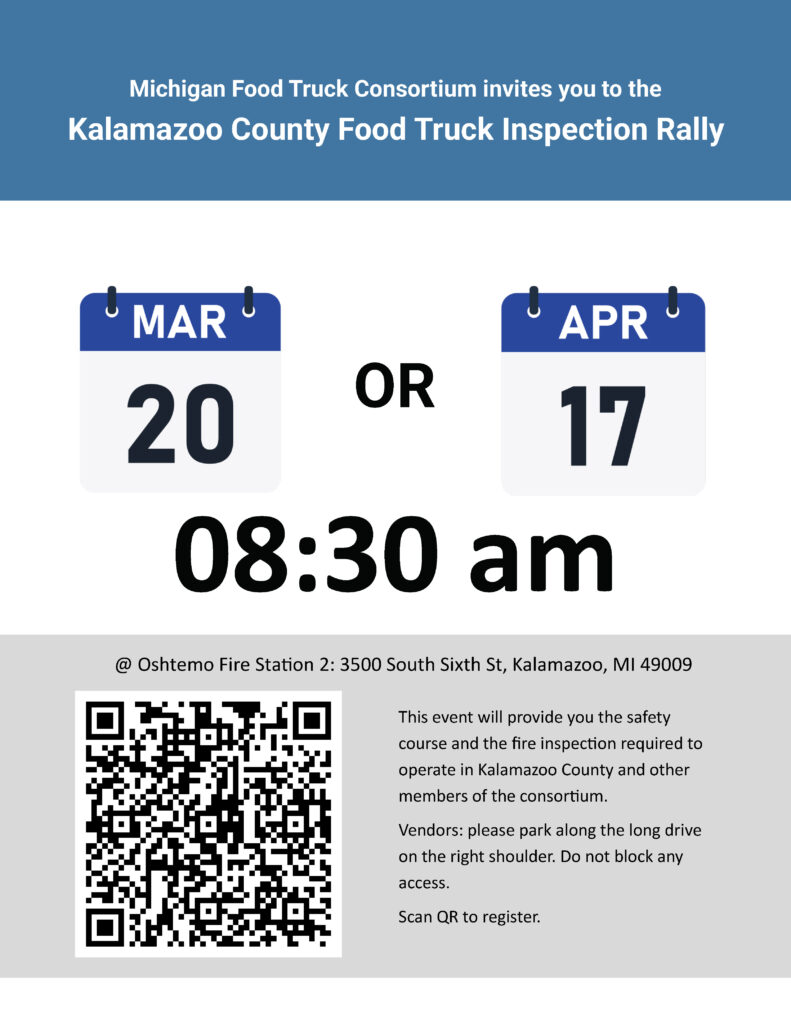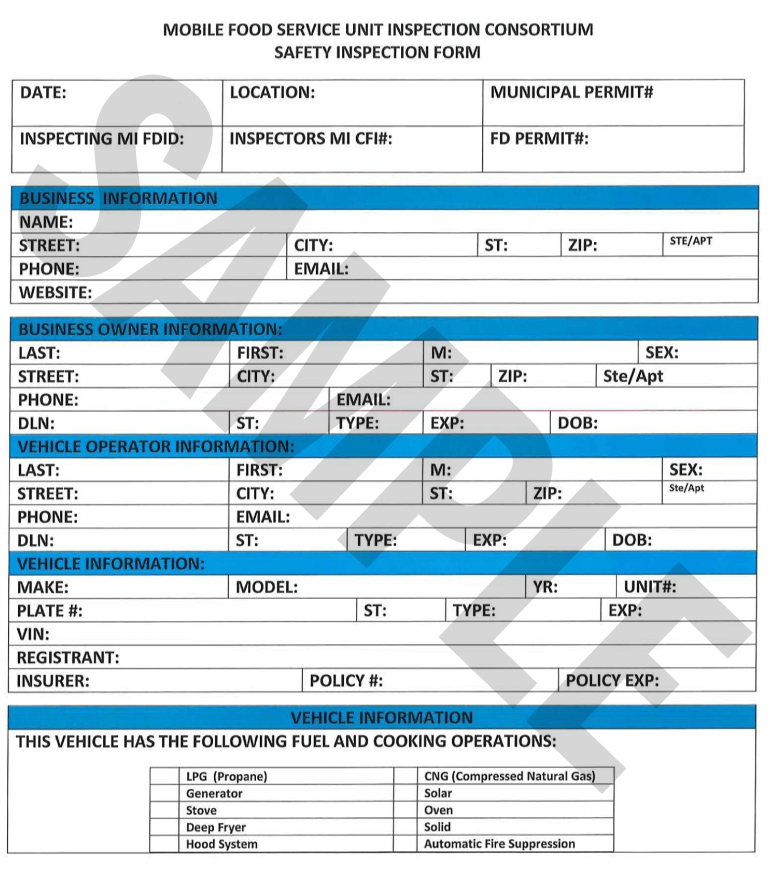Inspection Readiness
Passing a Fire Safety Inspection is Required Before Operating a Food Truck
Operators Need to Complete:
- Food Truck License / Registration
- Food Truck Safety Inspection / Propane System Inspection
Mobile and temporary cooking addressed in Section 50.7 of the 2018 edition of NFPA 1, Fire Code and Adoptable Annex B of the 2017 edition of NFPA 96, Standard for Ventilation Control and Fire Protection of Commercial Cooking Operations
The purpose of placing the language in Annex B of NFPA 96 was to allow for the jurisdictions who do not currently adopt/enforce NFPA 96 to adopt solely this annex to address mobile/temporary cooking specifically.
- Install an automatic fire-suppression system in the truck. Because 57% of food service business fires involve cooking equipment, most municipalities require this equipment to be installed. These systems automatically dispense chemicals to suppress the flames and also have a manual switch. Activating the system automatically shuts down the fuel or electric supply to nearby cooking equipment. Have your fire-suppression system professionally inspected semiannually. The manufacturer can refer you to an authorized distributor for inspection and maintenance.
- Keep portable fire extinguishers as a backup. Class K extinguishers are designed for kitchen fires involving grease, fats and oils that burn at high temperatures. Class K fire extinguishers are only intended to be used after the activation of a built-in hood suppression system. Keep Class ABC extinguishers elsewhere for all other fires (paper, wood, plastic, electrical, etc.).
- Schedule regular maintenance on electrical equipment, and watch for hazards like frayed cords or wiring, cracked or broken switch plates and combustible items near power sources.
- Have your exhaust system inspected for grease buildup. The NFPA Fire Code calls for quarterly inspections of systems in high-volume operations and semiannual inspections in moderate-volume operations. Monthly inspections are required for exhaust systems serving solid-fuel cooking equipment, like wood- or charcoal-burning ovens.
- Find and use a fire extinguisher appropriately. An acronym you may find helpful is PAST – Pull out the pin, Aim at the base, make a Sweeping motion, (be) Ten feet away.
- Clean up the grease. Cleaning exhaust hoods is especially important, since grease buildup can restrict air flow. Be sure to also clean walls and work surfaces; ranges, fryers, broilers, grills and convection ovens; vents and filters.
- Never throw water on a grease fire. Water tossed into grease will cause grease to splatter, spread and likely erupt into a larger fire.
- Remove ashes from wood- and charcoal-burning ovens at least once a day.
- Store flammable liquids properly. Keep them in their original containers or puncture-resistant, tightly sealed containers. Although a food truck kitchen is very small, you should attempt to store containers in well-ventilated areas away from combustible supplies, food, food-preparation areas or any source of flames.
- Tidy up to avoid fire hazards. Store paper products, linens, boxes and food away from heat and cooking sources. Properly dispose of soiled rags, trash, cardboard boxes and wooden pallets at least once a day.
- Use chemical solutions properly. Use chemicals in well-ventilated areas, and never mix chemicals unless directions call for mixing. Immediately clean up chemical spills
If a fire breaks out in your food truck, your staff must take control of the situation and all employees must safely exit the vehicle and lead customers to a point safely away from the truck.
- Be prepared to power down. Train at least one worker per shift how to shut off propane and electrical power in case of emergency.
- Have an evacuation plan. Designate one staff member per shift to be evacuation manager. That person should be in charge of calling 911, determining when an evacuation is necessary and ensuring that everyone exits the food truck safely. Ensure your staff knows where all of the exits are.
- Offer emergency training. Teach new employees about evacuation procedures and the usage of fire-safety equipment. Give veteran staff members a refresher course at least annually.
Note that each county in Michigan operates their food truck licenses and fire safety inspections differently.
Some counties require you to have your food truck license first before you can get a fire safety inspection.
Some counties require the safety inspection first before they give you the food truck license.
Check with your county’s health department and local fire department on how they handle these items.
One of the best ways to prepare for a fire safety inspection is to download the “Safety Inspection Form.” It covers all of the items you will need to secure before you can use your food truck.
Inspection Rallies
Kalamazoo Food Truck Rally
When:
April 17, 2025 8:30am
Where:
Oshtemo Fire Station 2
3500 South Sixth St,
Kalamazoo, MI 49009

Washtenaw County Mobile Food Service Inspection Consortium
When:
March 22, 2025 from 9:00am-12:00pm
Where:
Scio Township Hall
827 N. Zeeb Rd.
Ann Arbor MI 48103
When:
April 17, 2025 from 9:00am-12:00pm
Where:
Ypsilanti Township Fire Headquarters
222 S. Ford Blvd.
Ypsilanti, MI 48198
Battle Creek Mobile Food Vehicle Inspection
When:
April 03, 2025 8:30am
Where:
195 E. Michigan Ave,
Battle Creek, MI 49014



